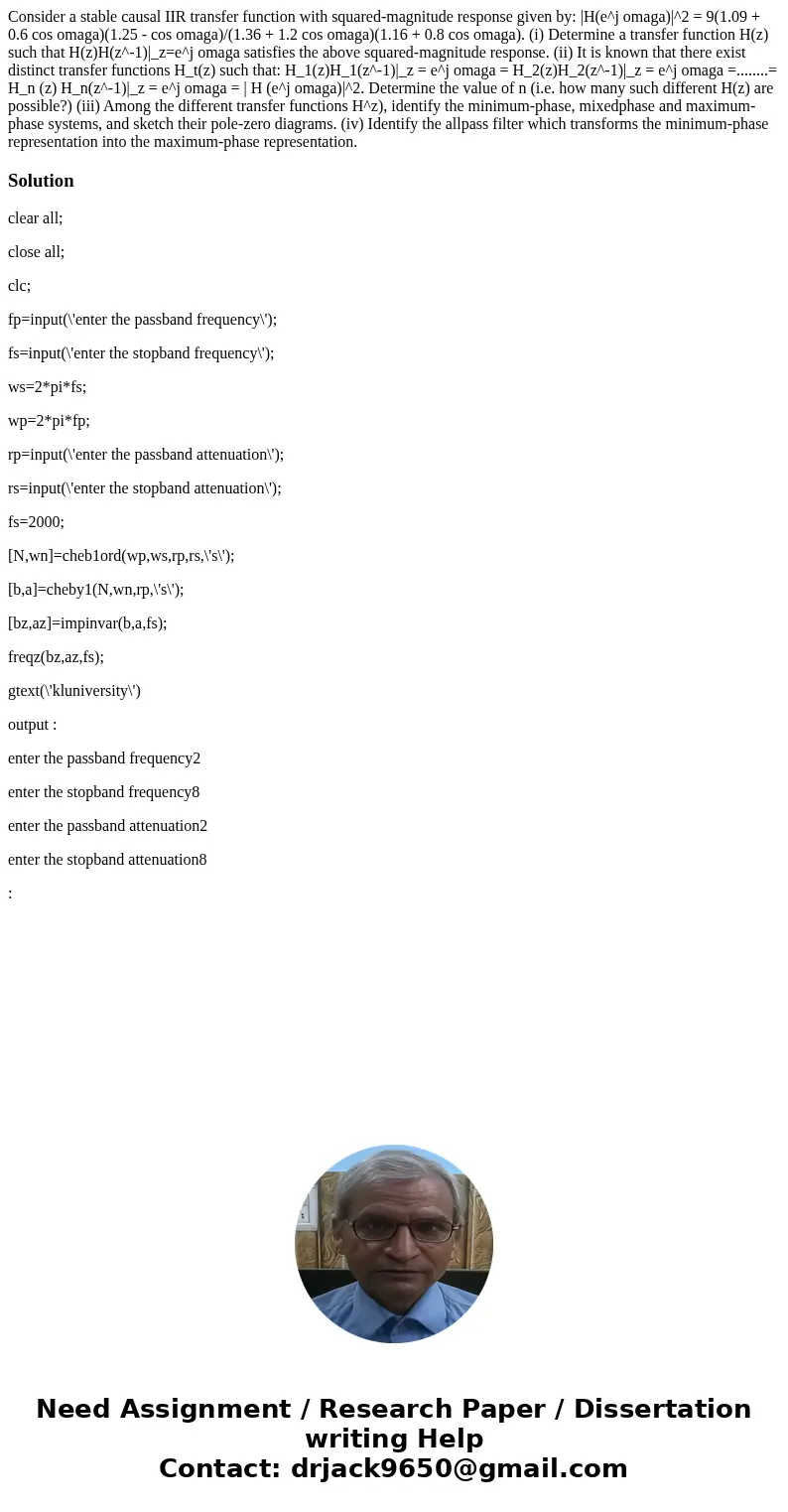Consider a stable causal IIR transfer function with squaredm
Consider a stable causal IIR transfer function with squared-magnitude response given by: |H(e^j omaga)|^2 = 9(1.09 + 0.6 cos omaga)(1.25 - cos omaga)/(1.36 + 1.2 cos omaga)(1.16 + 0.8 cos omaga). (i) Determine a transfer function H(z) such that H(z)H(z^-1)|_z=e^j omaga satisfies the above squared-magnitude response. (ii) It is known that there exist distinct transfer functions H_t(z) such that: H_1(z)H_1(z^-1)|_z = e^j omaga = H_2(z)H_2(z^-1)|_z = e^j omaga =........= H_n (z) H_n(z^-1)|_z = e^j omaga = | H (e^j omaga)|^2. Determine the value of n (i.e. how many such different H(z) are possible?) (iii) Among the different transfer functions H^z), identify the minimum-phase, mixedphase and maximum-phase systems, and sketch their pole-zero diagrams. (iv) Identify the allpass filter which transforms the minimum-phase representation into the maximum-phase representation.
Solution
clear all;
close all;
clc;
fp=input(\'enter the passband frequency\');
fs=input(\'enter the stopband frequency\');
ws=2*pi*fs;
wp=2*pi*fp;
rp=input(\'enter the passband attenuation\');
rs=input(\'enter the stopband attenuation\');
fs=2000;
[N,wn]=cheb1ord(wp,ws,rp,rs,\'s\');
[b,a]=cheby1(N,wn,rp,\'s\');
[bz,az]=impinvar(b,a,fs);
freqz(bz,az,fs);
gtext(\'kluniversity\')
output :
enter the passband frequency2
enter the stopband frequency8
enter the passband attenuation2
enter the stopband attenuation8
:

 Homework Sourse
Homework Sourse